David Stein, 18, has been hearing about the Crown Heights neighborhood of Brooklyn, N.Y., his whole life. Last weekend, he finally got to see it and even stay there for Shabbat as part of the annual Chabad on Campus International Shabbaton.
The three-day program—held from Nov. 7 through Nov. 9, two weeks before the International Conference of Chabad-Lubavitch Emissaries—brought together college students from the United States and beyond for a tour of the city, workshops and lectures, local home hospitality and the chance to spend time with hundreds of other like-minded young people.
“It was definitely the experience of a lifetime,” says Stein. “And I believe memories were created that I will look back on the rest of my life.”
Stein heard about the trip from Rabbi Avremi Yarmush, co-director with his wife, Nissa, of the Rohr Center for Jewish Life in Bellingham, Wash., which serves Western Washington University.
Yarmush has been on campus for six years, and this is his second time bringing students cross-country to the New York event. He joined rabbis and students from all over North America and abroad for the once-a-year, jam-packed schedule of spiritual, social and educational moments to be had with others of a similar ilk.
He says he hopes the weekend continues resonating with students in a way that makes it a catalyst for Jewish life. “I feel students come back empowered, inspired and with a very strong sense of Jewish identity,” says the rabbi. “And if they come back with that sort of strength and inspiration to try and be a Jewish leader on campus, that’s all I’d be looking for—true Jewish leadership from these students, trying to find other Jews on campus an get them more involved with Judaism.”
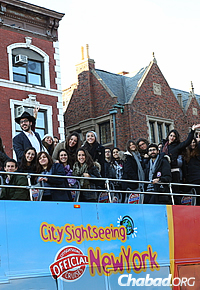
Staying in a densely Jewish part of Crown Heights was a highlight for Stein, who comes from an area where he says spotting someone visibly Jewish is rare: “I was able to walk around on Shabbat and be able to say ‘Good Shabbos’ to people.”
The Saturday-night mega-event was another such opportunity to join together with community.
“I got to experience the feeling of entering a room and seeing thousands of Jews my own age,” he explains. “Being in a room with so much spirit, ruach—it’s an undeniably amazing experience.”
‘Keep Going, Keep Growing’
Rabbi Yitzi Steiner, co-director of Chabad @ the University of Minnesota in Minneapolis with his wife, Chavi, brought 20 students to the Shabbaton. “I think it’s one of the greatest events that Chabad on Campus puts on,” he says. “It’s powerful—students get to see what keeps their rabbis and rebbitzens ticking, and why we do what we do.”
There are about 1,000 Jewish students on campus, and 60 to 75 participating in Chabad activities on any given week, he notes.
Reflecting on what students thought about the weekend and its many programs, Steiner reports that “they were saying they really get the message, that every single mitzvah is important.”
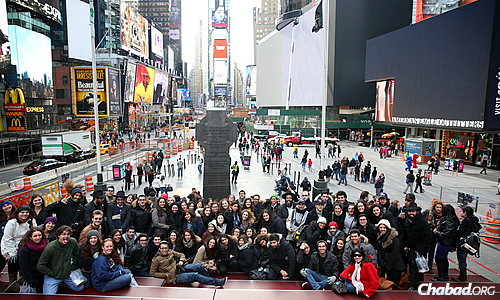
He adds that they also came away with a broader, equally powerful imperative: “The Rebbe’s [Rabbi Menachem M. Schneerson, of righteous memory] message of never being satisfied with where you are—to keep on going and keep on growing.”
Mirel Levitansky, co-director of Chabad at Santa Monica College in California, brought a group of 12 students to the event this year with her husband, Rabbi Eli Levitansky.
They made the five-hour trip from Los Angeles to give the students the opportunity to experience a special Shabbat, and to share that experience with nearly 1,000 students from around the United States and beyond.
They come from a school that is a commuter campus with about a 14 percent Jewish population, she explains. That’s some 3,000 to 4,000 Jewish students from across the Jewish spectrum.
Levitansky says she hopes being at the event translates into their doing more mitzvahs, being more involved with Jewish activities on campus and bringing friends to learn or take part in events, as well as making them more confident in their heritage.
“I want them to think about their own Judaism and their own connection to G‑d, and to continue to have a Jewish background and a Jewish base and foundation,” she explains. “They’re at a time period where they’re going to start making life decisions, and having a solid Jewish feeling is very important.”
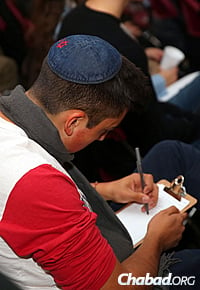
A Chance to Make Connections
Eliana Sara Amudson, 23, went to the event for the second time this year with the Levitanskys.
“Last year was a shock because I didn’t know what to expect, but when I got there, I realized it was way more awesome and way bigger than I imagined it could be,” she says. “And I had so much fun that I came back this year.”
She says she very much enjoyed the lectures and the speakers who came in, and appreciates that they chose topics that students care about and that are relevant to their lives.
And she and the entire crowd got the chance to hear from Rabbi Moshe Kotlarsky—chairman of Chabad on Campus International and vice chairman of Merkos L’Inyonei Chinuch, the educational arm of the Chabad-Lubavitch movement—who spoke at the Shabbat luncheon about the students being leaders, and taking the experience of the weekend back and sharing it with their peers.
“Make sure that every Jew experiences at least one Shabbat dinner with Chabad on Campus,” he emphasized.
Even coming from a large Jewish community in Los Angeles, Amudson says she was struck by her visits to Crown Heights. “It’s refreshing to be in a community where mostly everyone’s Jewish; it’s a Chabad community and very supportive. Having a Shabbaton there really makes an impact.”
She is awed by how families open their homes to students for the weekend; the house where she stayed had some 30 guests for Shabbat dinner. “People are just so loving, so warm and welcoming—and these are people we’ve never met before.”
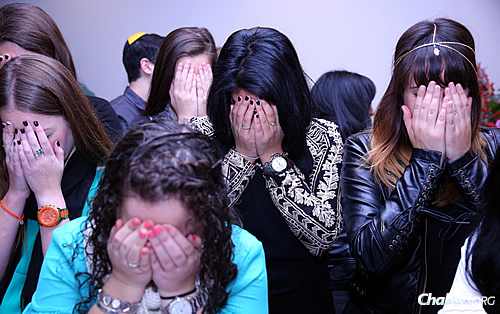
Throughout the year, she told other students she met through Chabad about the Shabbaton and how it’s something to look forward to. “The Shabbaton is important because there are Jews you can connect with; it is the perfect place to be for growing as a Jew at this crucial age and point in our lives.”
The Sunday trip to the Ohel in Queens, N.Y.—the resting place of the Rebbe—tied the trip together, she adds. “It’s a spiritual experience, a solemn moment that you really get to digest and think about the whole weekend. We can use it as a way to talk to the Rebbe and talk to our rabbi, and connect everything we’ve learned throughout the weekend.”
Also on Sunday, at the closing program that took place at the Ohel, students heard from philanthropist George Rohr, a leading benefactor of Chabad on Campus worldwide. He explained why he supports students so significantly—they represent the future.
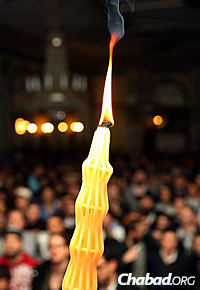
Students paid rapt attention to his words, as he advised them to marry other Jews and raise Jewish families, and to get their friends and peers to do so as well.
For Rabbi Bentzy Shemtov, co-director of Chabad at the University of Illinois at Chicago and University Village with his wife, Chani, taking students to New York for the lectures, Shabbat experiences and time for personal reflection are just a few elements of what makes this such an important trip.
“They get recharged in their Judaism,” he says, “and get inspired by many other young Jewish students on their respective campuses.”
The Illinois university he works with is home to about 1,500 Jewish students; Chabad welcomes tens of them weekly at Shabbat dinner and learning programs.
But after going to New York and attending the Shabbaton, attests Shemtov, these young men and women return to campus with more Jewish pride than they had before, as well as a sense of newfound activism: “They want to bring in new students who’ve never been involved with Chabad.”

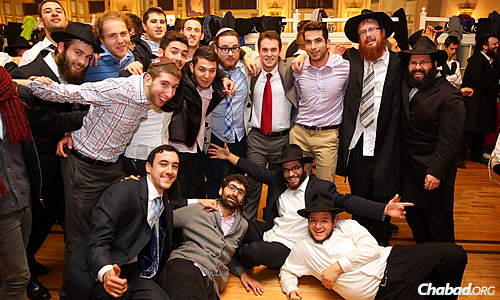
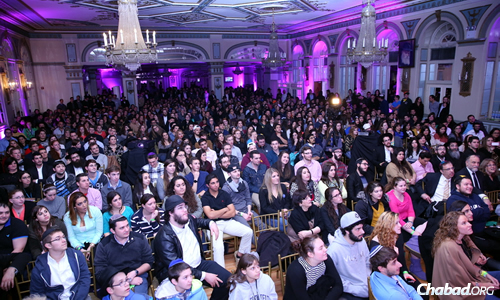
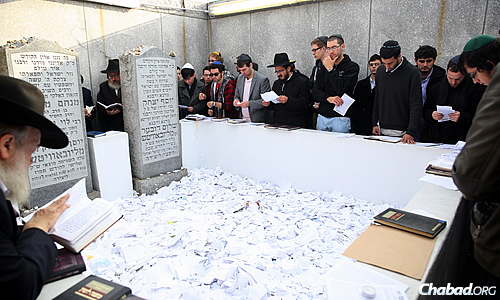

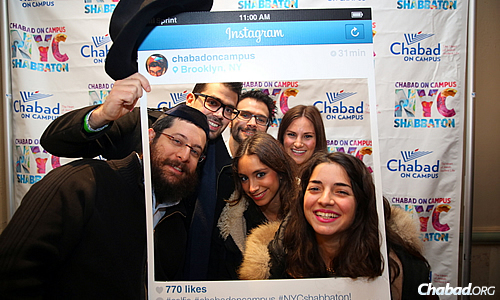

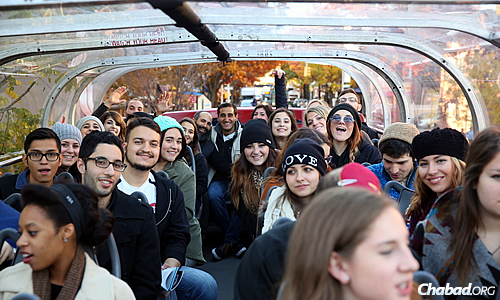


Start a Discussion